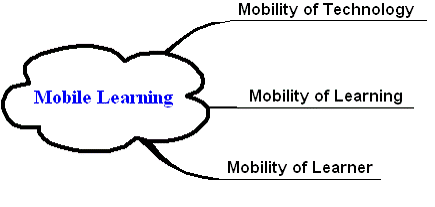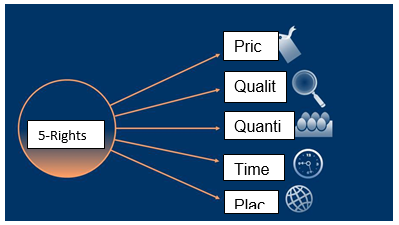How mobile technology changed the way we teach and learn
Without a doubt, technology has revolutionized how teaching and learning take place in the contemporary world. This notwithstanding, it is obvious that the general approach to teaching has not changed. With or without the use of technology, teaching always involves teachers talking to students. Unlike the traditional way of teaching, however, mobile technology enables teachers to spread the learning processing far and wide. While access to learning was initially limited to only a few privileged individuals it is now possible for people to access educational materials quite easily regardless of their status in society. As long as one has access to an Internet connection, he or she should be in a position to access the learning materials.
Experience of using a smartphone
I own a smartphone and have used it on many occasions to conduct very interesting sessions with my students. With the help of social media networks, I have been able to hold lengthy sessions with my students as long as they have smartphones and can connect to the Internet. A very useful feature of the smartphone is the ability to use the whassup application. I recently guided my students to create a whassup group for teaching and learning purposes and the experience has been great. Through the whassup group, students are free to ask questions and I can respond quite easily.
The group has also created a forum for students to exchange ideas and students can respond to each other’s questions. The beauty of using this technology is that every member of the group has access to every trail of conversation and no one misses out. The greatest challenge of using a smartphone for teaching and learning lies in the fact that not every student has access to a smartphone. While those with smartphones are happy and enjoy the use of whassup and other social network services for learning purposes, those without are disadvantaged and have to rely almost entirely on their classmate’s goodwill to access conversations.
Key factors to consider when developing a learning environment that makes use of m-learning technology
In developing a learning environment that utilizes them-learning technology, I will pay special attention to ensuring that the technology is, first and foremost, easily accessible to all. As earlier explained, the cost of owning a smartphone may be quite prohibiting and students from a less privileged background may be left out. For wide coverage and to incorporate as many students as possible, it may be helpful to create mobile phone applications that can easily be integrated with computers. Doing so will certainly benefit many students since access to computer services may not be as difficult as access to smartphones. For students who do not have personal computers, they can access services through Internet kiosks at a reasonable cost.
The use of mobile phone technology has made the learning process to be a collaborative exercise rather than an individual effort. Other mobile phone technologies that may be used by teachers and learners include Google Drive and Dropbox. Mobile phones have also made learning to be active and not passive since teachers as well as students have to be fully engaged. Through the use of mobile phone technologies, learners are also able to personalize their learning experience. The use of mobile phone technologies also makes it possible for both teachers and learners to multitask.
Key ideas presented in literature regarding the impact of mobile technology on informal learning
Generally, informal learning refers to learning that takes place outside a school environment. It is the learning that occurs as individuals carry on with their daily activities. Research concerning informal learning has tended to focus on the development of applications that can effectively support informal earning. However, very little evidence exists about the effects of modern mobile technologies on informal learning.
Research indicates that there is potential for global positioning system (GPS) technologies to support situated informal learning, collaboration, group creation, and sharing of content. Location-aware mobile technologies are expected to have an impact on the learning process of informal learners. Studies have also identified several areas that mobile technologies that have impacted informal learning. First, the use of mobile technology expands the learning space beyond the traditional learning environment and enables educators to reach scores of learners who would otherwise not be reached.
Mobile technology also makes it possible for informal learners to gain access to situated content just like other learners in a traditional setup. Also, learners can learn through knowledge sharing and active interaction with other learners. Through the help of technology, new learning sites are created and collaboration is promoted.
Favorite sites for my learning
As an educator, I spend a huge percentage of my time researching different topics while preparing to meet my students. Typically, my research activities involve the use of textbooks, journal articles, magazines, and online resources. Among my favorite sites are tizag.com and w3schools.com. These sites provide materials for different computer-related concepts and are designed with a simple interface that almost anyone can navigate quite easily. The fact that the learning information presented through the sites is freely accessible further enhances access to all and encourages many to learn. Undoubtedly, these sites are regarded as a very useful source of information for individuals willing to gain knowledge in different computer-related concepts.
Concept map illustrating the benefits and disadvantages of mobile technology and informal learning
Figure 1 shows how technology has greatly revolutionized the learning process. As can be seen from the figure, it is evident that mobile learning depends on three important aspects. First, the technology itself needs to be mobile. Among other things, the mobility of technology facilitates a mobile learning environment and ultimately, the mobility of the learner.

There are various benefits and disadvantages associated with both mobile technology and informal learning. Figure 2 is a conceptual map illustrating the benefits and disadvantages of mobile technology and informal learning.

Figure 2 shows several benefits and disadvantages that are linked to mobile technology and informal learning. Among the benefits are flexibility, increased accessibility, and reduced cost of learning. Mobile technology and information learning create a flexible environment for learners and any individual who can not fit in a traditional learning environment is not left out. There is also increased accessibility in the sense that learners can access learning materials from wherever they without a problem.
The learning space is thus expanded. Mobile technology and information learning also make learning affordable since learners do not have to spend heavily to learn. Two obvious disadvantages of mobile technology and informal learning are lack of follow-ups and the need for self-discipline. Unlike the traditional setup where the learners’ activities are closely monitored, the success of mobile learning depends so much on the learners’ attitude.